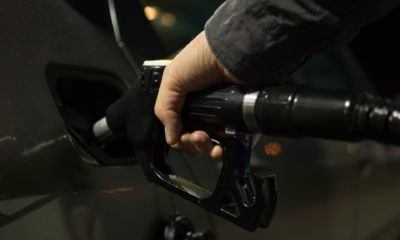Featured
IEA unveils its net zero carbon report for 2050
The International Energy Agency has just published a global energy roadmap. A first that shows that governments can take action to rapidly boost clean energy, reduce fossil fuel use, create millions of jobs, boost economic growth and achieve net zero carbon by 2050. The roadmap defines more than 400 milestones to guide the global journey to net-zero by 2050.

The International Energy Agency (IEA) has finally released its report in which it shows that it is possible to achieve zero carbon emissions in the energy sector by 2050. However, at the outset of the document, IEA Executive Director Fatih Birol warned: “The scale and speed of the effort required to achieve this critical and formidable goal makes it perhaps the greatest challenge humanity has ever faced.
The IEA’s path to this brighter future will only be possible through a historic surge in clean energy investments that will create millions of new jobs and drive global economic growth. And moving the world down this path requires strong and credible policy actions by governments, backed by much greater international cooperation.”
Read more on the subject and find the latest business news in the world with our companion app Born2Invest.
More than 400 measures to be implemented
Indeed, the roadmap defines more than 400 milestones to guide the global journey to by 2050. First, these prohibit, starting today, any investment in new fossil fuel supply projects or the construction of new coal-fired power plants. They also ban all sales of new internal combustion engine passenger cars by 2035.
And just with these two milestones, the IEA claims that the global power sector would already reach net zero emissions by 2040. In any case, the report notes that immediate and massive deployment of all available clean and efficient energy technologies, combined with a major global push to accelerate innovation, is needed in the near term.
The pathway calls for annual additions of solar photovoltaics to reach 630 gigawatts by 2030, and wind power to reach 390 gigawatts. Together, this is four times the record level set in 2020. For solar photovoltaics, that’s the equivalent of installing a large solar farm every day or so. A major global effort to increase energy efficiency is also a key component of this effort, resulting in an overall rate of energy efficiency improvement averaging 4% per year through 2030, about three times the average of the past two decades.
Most of the global reductions in CO2 emissions by 2030 on the way to net zero will come from technologies readily available today. But by 2050, nearly half of the reductions will come from technologies that are currently only in the demonstration or prototype phase. This requires governments to rapidly increase and reprioritize their research and development spending by placing it at the heart of energy and climate policy.
In this regard, advances in advanced batteries, hydrogen electrolyzers and direct air capture and storage could be particularly impactful. The report also notes, that a transition of such magnitude and speed cannot be achieved without the sustained support and participation of citizens, whose lives will be affected in multiple ways. “The clean energy transition is made by and for the people,” said Fatih Birol.
40 billion/year of investment needed in developing countries
“Our roadmap shows that the enormous challenge of rapidly transitioning to a net-zero energy system is also a huge opportunity for our economies. The transition must be fair and inclusive, leaving no one behind. We must ensure that developing economies receive the financing and technological know-how they need to develop their energy systems to meet the needs of their growing populations and economies in a sustainable manner,” he added.
Addressing developing economies that need to provide electricity to an estimated 785 million people who lack access and clean cooking solutions to 2.6 billion people who lack access, the report notes that it would take about $40 billion per year, or about 1% of the average annual investment in the energy sector, to overcome these problems. This transformation would also bring major health benefits through reductions in indoor air pollution and premature deaths of 2.5 million people per year. In short, the total annual energy investment required to implement the IEA’s roadmap is $5 trillion by 2030.
This would add an additional 0.4 percentage points per year to global GDP growth, based on a joint analysis with the International Monetary Fund.
This increase in private and government investment would create millions of jobs in clean energy, including energy efficiency, as well as in the engineering, manufacturing and construction industries. All of this will enable global GDP to gain an additional 4% by 2030, compared to current trends. In short, according to the IEA’s scheme, global energy demand will be about 8% lower than today’s, but it will serve an economy twice as large and a population 2 billion larger. Nearly 90% of electricity production would come from renewable sources.
Wind and solar photovoltaic together would account for nearly 70% and most of the rest would come from nuclear power. Solar would be the world’s largest total energy supply source. Fossil fuels would drop from nearly four-fifths of the total energy supply today to just over one-fifth. Fossil fuels, which will remain, are those used in goods where carbon is embedded in the product such as plastics, carbon capture facilities, and in sectors where low-emission technology options are rare.
__
(Featured image by catazul via Pixabay)
DISCLAIMER: This article was written by a third party contributor and does not reflect the opinion of Born2Invest, its management, staff or its associates. Please review our disclaimer for more information.
This article may include forward-looking statements. These forward-looking statements generally are identified by the words “believe,” “project,” “estimate,” “become,” “plan,” “will,” and similar expressions. These forward-looking statements involve known and unknown risks as well as uncertainties, including those discussed in the following cautionary statements and elsewhere in this article and on this site. Although the Company may believe that its expectations are based on reasonable assumptions, the actual results that the Company may achieve may differ materially from any forward-looking statements, which reflect the opinions of the management of the Company only as of the date hereof. Additionally, please make sure to read these important disclosures.
First published in LesEco.ma, a third-party contributor translated and adapted the article from the original. In case of discrepancy, the original will prevail.
Although we made reasonable efforts to provide accurate translations, some parts may be incorrect. Born2Invest assumes no responsibility for errors, omissions or ambiguities in the translations provided on this website. Any person or entity relying on translated content does so at their own risk. Born2Invest is not responsible for losses caused by such reliance on the accuracy or reliability of translated information. If you wish to report an error or inaccuracy in the translation, we encourage you to contact us.

-

 Business2 weeks ago
Business2 weeks agoLegal Process for Dividing Real Estate Inheritance
-

 Fintech13 hours ago
Fintech13 hours agoJPMorgan’s Data Fees Shake Fintech: PayPal Takes a Hit
-

 Fintech1 week ago
Fintech1 week agoPUMP ICO Raises Eyebrows: Cash Grab or Meme Coin Meltdown?
-

 Africa3 days ago
Africa3 days agoSurging Expenditures Widen Morocco’s Budget Deficit Despite Revenue Growth
















